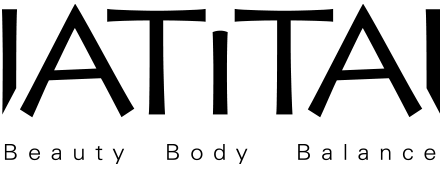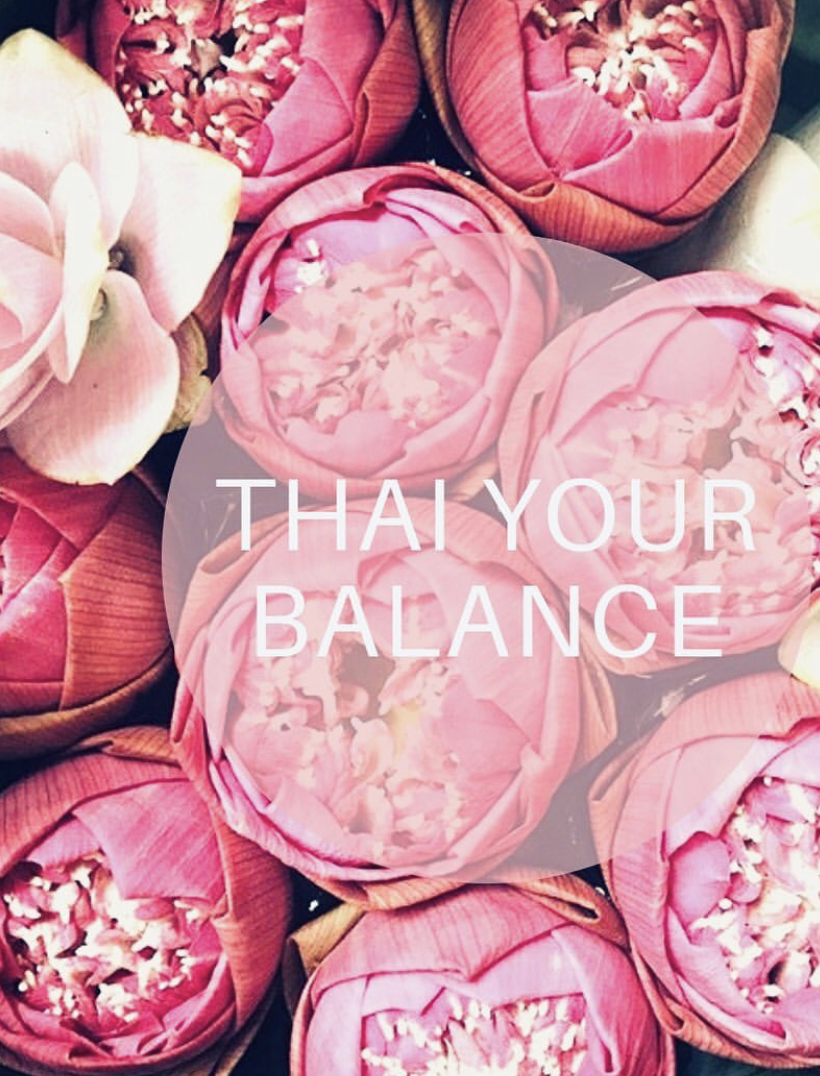Health in transition – THAI YOUR BALANCE
A new understanding of health
In today’s hectic and fast-paced society, people are increasingly complaining about stress and imbalance – one of the reasons why health and “wellness” have become important trends of the 21st century.
At the same time, we can see that a process of rethinking has begun: What do we understand by “health” today? We are moving away from a very selective, individual optimisation of health, with all kinds of mostly technical aids (keyword e-health), towards a more holistic and meaningful view of our own body. The forces existing in the human being should be discovered and above all preserved by this self-perception (keyword mindfulness).
They become the model for a deeper search for one’s own life satisfaction (keyword deceleration). The quality of life should be sustainable, one wants to be healthy “all around” and enjoy life!
Traditional healing methods from Asia -Holistic approach
In this context, traditional healing methods from Asia in particular are receiving increasing attention in the Western world. Because the basis of these often millennia-old methods is always a holistic view of the human being and his healing: mental and physical health is always achieved here in harmony; together and in interaction with the environment.
Essential for understanding these healing techniques is the presence of the “life force”, also called body energy, “prana” or “chi”, which is inherent in every human being and all other forms of life. The key to health lies in the perception and awareness of one’s own existing power, which can circulate freely and unhindered in a healthy body.
Holistic healing methods – “Thai Your Balance
Thailand certainly has one of the most fascinating healing methods to offer. With influences from TCM and Indian Ayurveda, Thailand has developed its own distinctive style over many centuries. Countless spas all over the world testify to the unbroken popularity of these treatments, the “Thai Massage” is simply world-famous.
But what exactly is behind it? What makes this fascination?
In essence, this very old holistic medicine describes a network of more than 70,000 energy pathways, also called “sen”, which are connected by nodes. The energy that flows through these pathways is responsible for the balance of all physical, mental and spiritual processes. If an imbalance exists, the balance of the body is disturbed and the consequences can be illness, discomfort or pain.
With the “Thai Massage”, which is known all over the world, these blockages in the energy balance of the human being are effectively treated. The “massage” is actually an acupressure and can be better described as Thai Yoga massage: With a combination of pressure, massage and stretching of the muscles, the therapist works in gentle rhythmic movements along these energy lines, thus releasing blockages and achieving a balance in the body of the person being treated. After such a treatment one should feel “energized” and well-balanced.
Whoever feels something like a sore muscle afterwards should not be worried. It simply means that the blockages at the energy junctions were stronger and with repeated massages these symptoms disappear. – If you are still unsure, you should consult a doctor before the first application.
The Thai-Yoga-Massage, part of the traditional medicine of Thailand, has its origin mainly in India. It is believed that a personal healer of the Buddha, who today would perhaps be called a “medical advisor”, is a doctor named Shivaka Kumar Baccha, the founder of Thai Massage. His teachings on massage, herbal medicine and other healing methods, together with the teachings of Buddhism, were made geographically known over two thousand years ago in a region that is roughly equivalent to that of modern-day Thailand.
It is not scientifically proven whether Shivaka really lived. However, it does not detract from his popularity in Thailand. He is still fully revered today and Thais assume that he is the “father” of their traditional medicine. – Apart from that, historical Thailand has always been at the centre of a vast network of commercial travellers: Indian, Chinese or Arab traders have always provided new influences of all kinds that reached the country this way. They have all contributed over many centuries to the development of Thailand’s unique healing methods.
“In 1998 I travelled to Asia on business for the very first time. Classical foot massages, mostly Chinese, are offered on every corner and so I tried it on a street market. Soon after that a Thai massage. What an experience! I felt totally relaxed, calm and balanced afterwards. Just great! Since that time I have been going to these massages regularly, without knowing what it really is and what old healing art is behind it”… says Stefan Knobloch, a businessman who has been travelling in Asia for almost two decades and also lives there for a while.
Buddhist temples – center of medicine
In historical times Buddhist temples and monasteries in Thailand were the centre of every community or village.
The entire cultural, social and spiritual life took place there: School, hospital, exchange of information, etc. Disciplines such as herbalism, meditation, or martial arts (called “Muay Thai” in Thailand) have their origins there, have been developed, taught and practiced over centuries and, above all, preserved for future generations. Monks were philosophers, teachers, shamans, healers, priests all in one person.
In Thailand a traditional holistic medicine has developed, which essentially consists of three areas: spiritual prayer and meditation, herbal medicine – combined with a healthy diet, and healing through touch: Thai massage.
Only a few people should know that the Thai Massage, which can be found everywhere today, was originally practiced only by monks!
In 2012 Knobloch chose the city of Chiang Mai in the north of the Kingdom of Thailand as his new base in Asia – and continued the regular Thai massages there. “But it was only when I spent time there that I began to understand that Thailand is not only more pristine, but also different in a special way from most neighbouring countries. I became aware that Thailand has wonderfully understood how to lovingly preserve its millennia-old culture and its very own charm. Especially in Chiang Mai, with the LANNA culture, which is at home there and includes a special form of traditional medicine, this is very noticeable.
Many of the herbal therapies and healing methods used in Thailand today therefore originate from Buddhist temples. During this time, only a few people received formal training, and so, for example, the knowledge of herbal medicine and hand-made recipes was usually only passed on orally to the next generation. Many of these recipes and herbal remedies were also kept secret. For example, the healing properties of kaffir lime, rice bran, lemongrass, etc. were generally known. But only the monks and medicine healers knew the other ingredients to make a healing recipe or a powerful natural remedy…
“I was particularly fascinated by the beneficial benefits of Thai aromatherapy and the incredible variety of herbal remedies with many fresh ingredients from the region,” explains Knobloch. “The idea was born to develop a small line of fresh herbal skin and body care products with purely local ingredients that are deeply inspired by this thousand-year-old Thai medicine. Care products that are based on this authentic holistic philosophy and are more than just care.”
It took perseverance, patience, empathy and many conversations with local partners to convince them to share this unique healing knowledge and jointly develop products that also meet western standards: A careful selection of handmade recipes was created, which can uniquely nourish, revitalize and protect skin and hair with modern mixtures of these classic Thai healing methods.
A close friend of the family, Italian-born designer manager Paolo Tumminelli and his team were commissioned to develop a logo brand that embodies this holistic approach: In balance, with an open background of meaning, but implicitly referring to its Thai origin. Tumminelli immersed himself deeply in the Thai healing arts and delivered a brilliant concept: IATITAI – Beauty Body Balance.
The name connects this holistic world with the high recognition value of a palindrome. The concept also includes variations of classic Thai patterns, which are symbols of a country that is so rich in colour, authentic, exotic and full of wonderful aromas.
The diverse tropical nature and its rich raw materials naturally played a central role. The use of local plants, typical for Thailand, were the key to many natural remedies and external applications: Ground rice mixed with a touch of turmeric, for example, was used to revitalize the complexion. Lime was a popular source of energy. Herbs or fruits such as lemongrass, ginger, or coconut were regularly used for beauty care but were also used as a matter of course in cooking…
The handmade recipes are the focus of IATITAI. “We do not aim for big product lines. Instead, we produce our hand-picked products in small quantities to guarantee fresh and effective raw materials. Each recipe is a combination of a few powerful ingredients, grown naturally and free of chemicals, mainly in village communities around Chiang Mai. It is the core of the company and what drives us”, explains Knobloch, who has acquired natural science knowledge over the years. “We would like to invite everyone to experience these very old remedies for themselves. Authentic Thai. We simply believe that IATITAI is always more than just a product – it is a philosophy.”
So if you eat a classic like a “Tom Yum” fish soup in a Thai restaurant today, you are actually eating according to an original recipe of this very old medicine: It is recommended there to take this soup for stomach problems, but also for a cold without fever, because of the many tonic and antibiotic ingredients. Truly holistic!
IATITAI is available in Germany via www.flaconi.de, in Austria via www.flaconi.at
For questions, product samples or further information, please do not hesitate to contact us! We would be pleased to receive specimen copies (email or post) at the address below
Pressekontakt:
McLean Communications
Ilona Marten-McLean
Schulstr. 21
82166 Gräfelfing
info@mcl-communications.com
+49-172-8121351
+49-89-127 11 484

